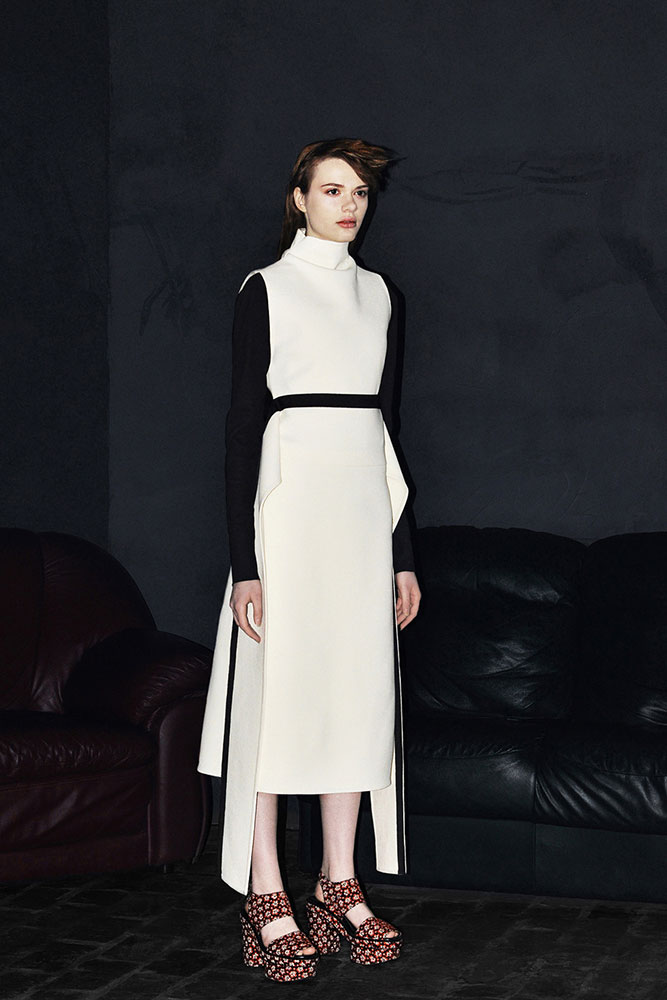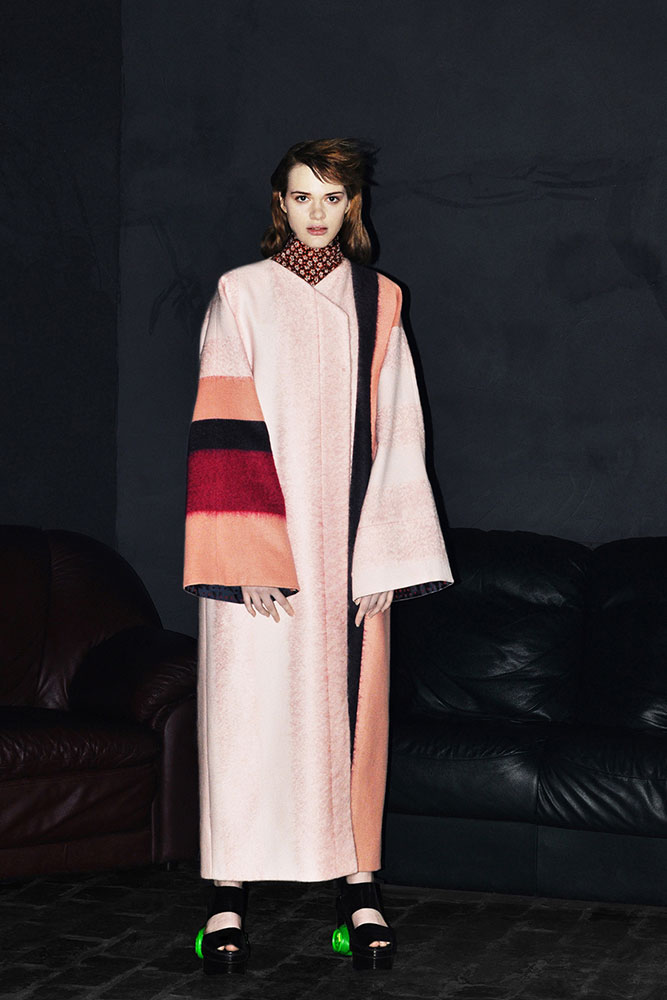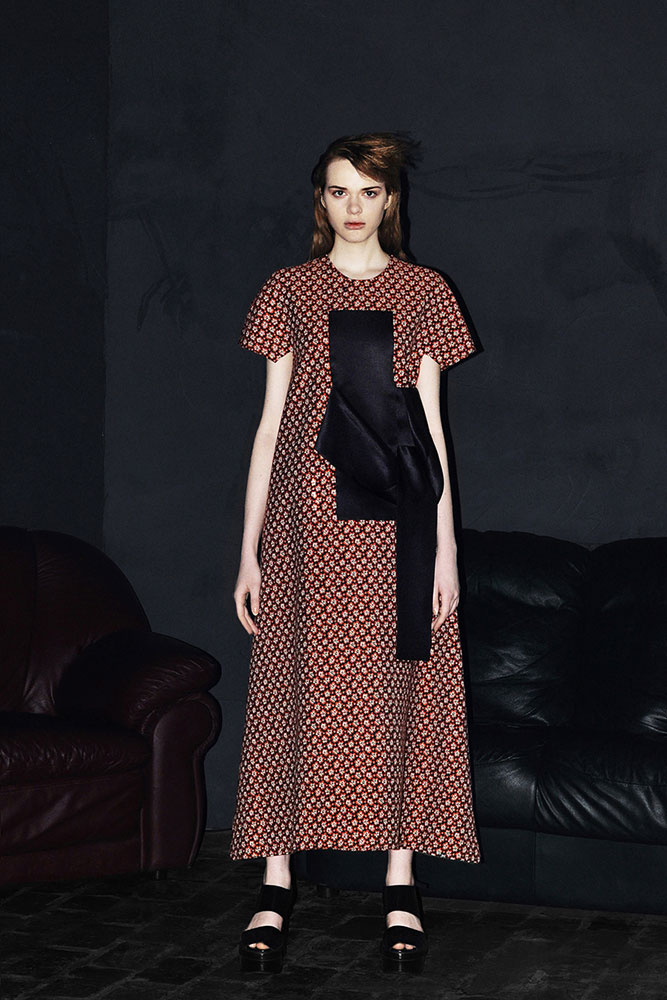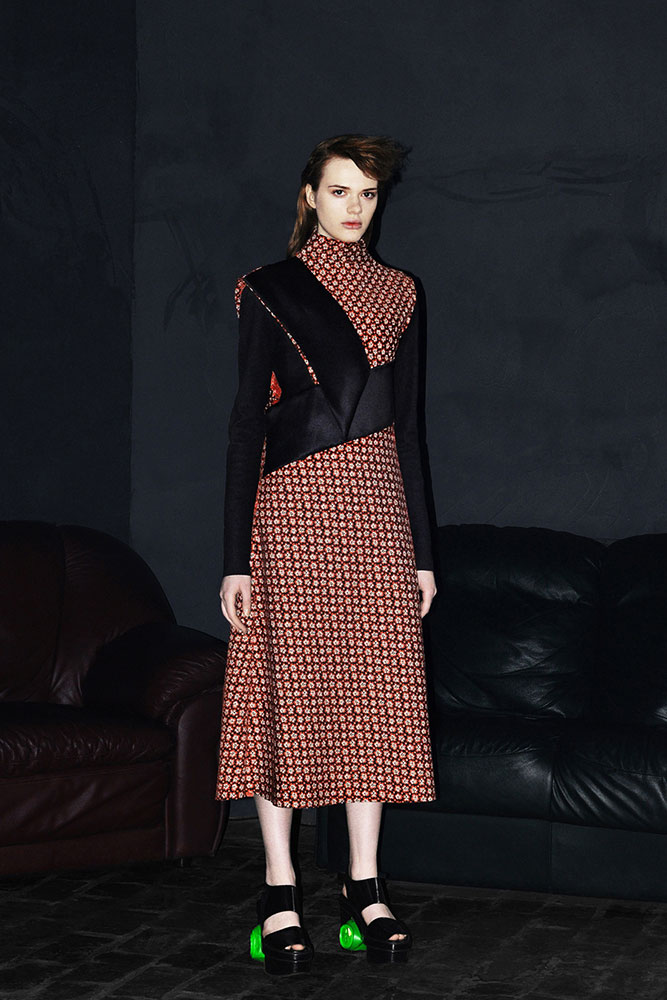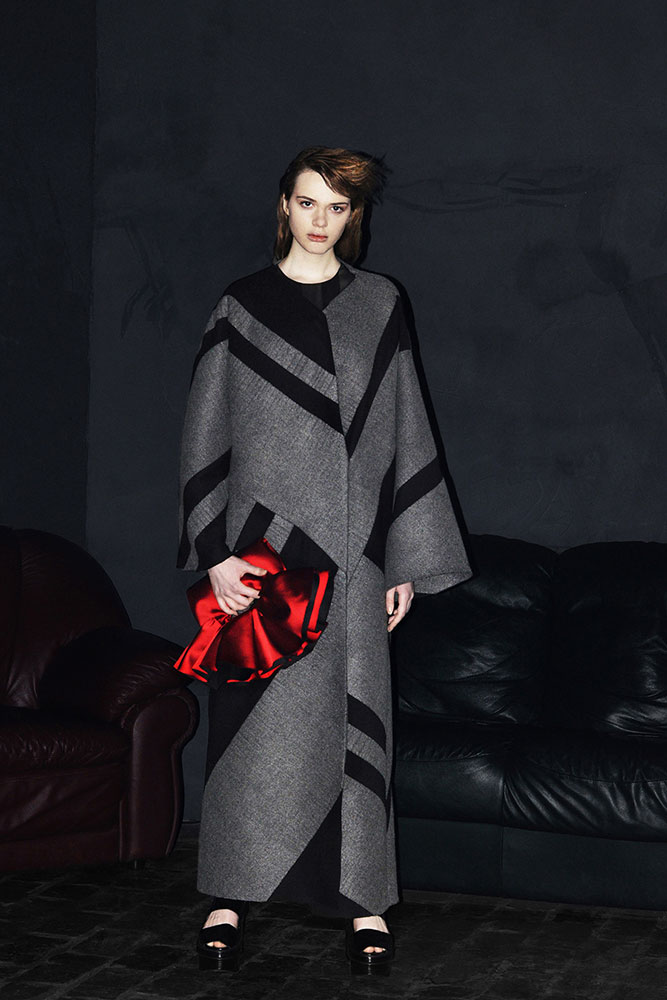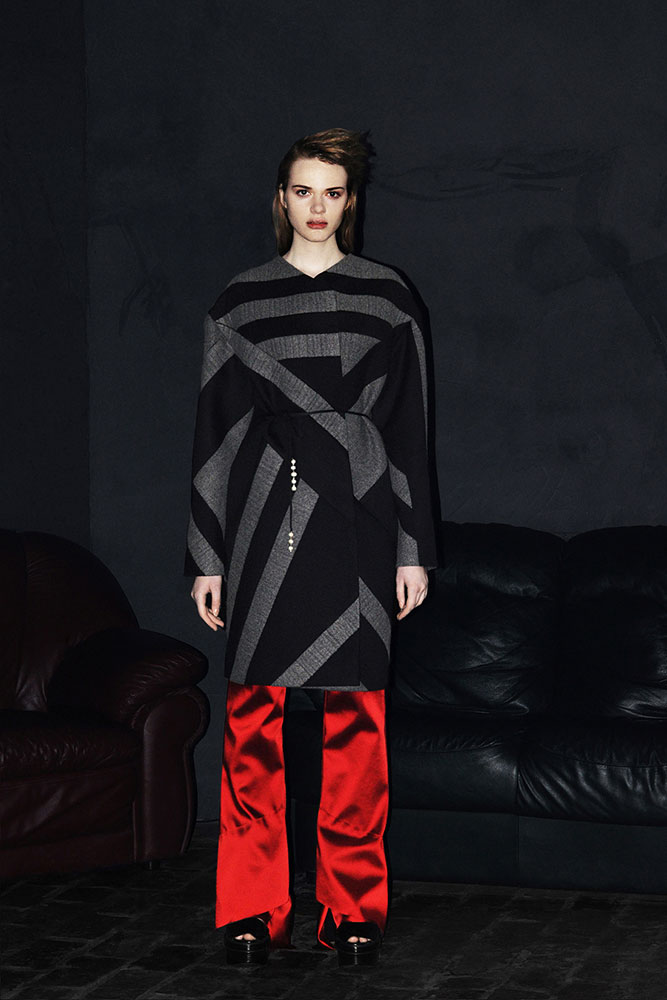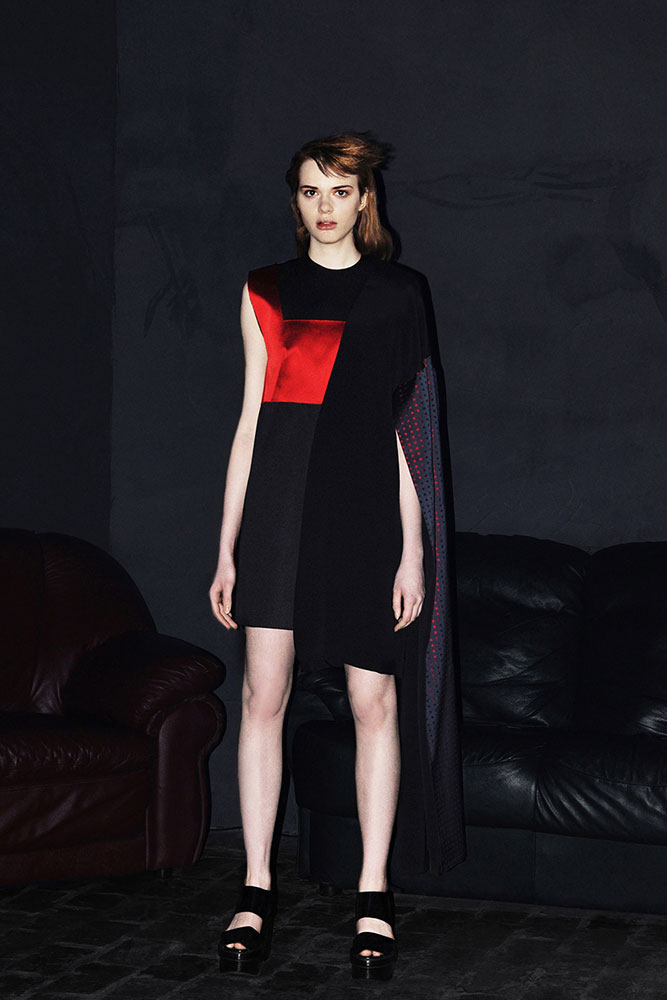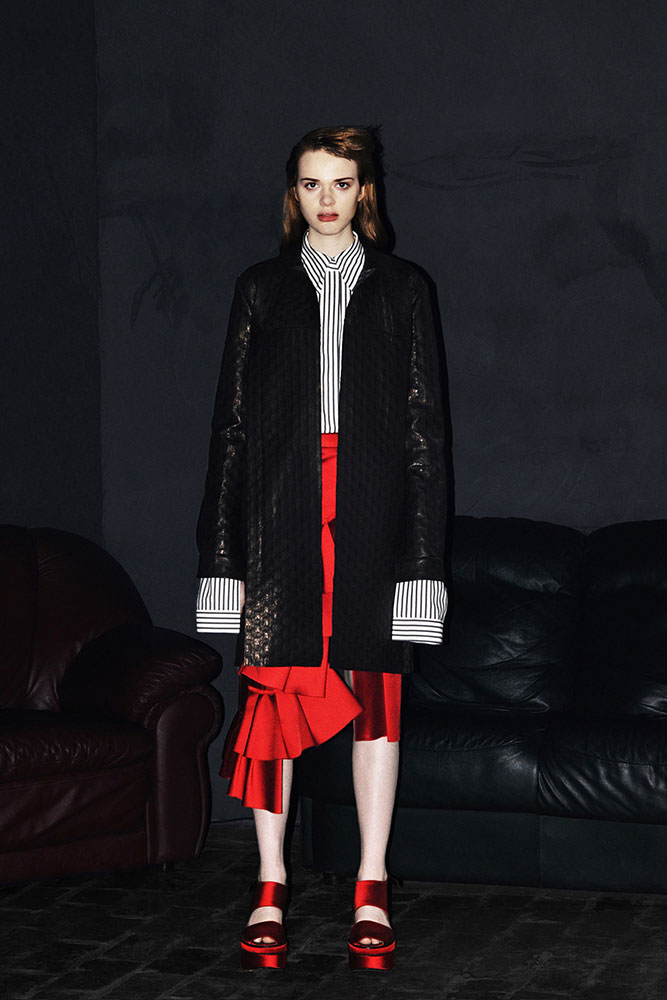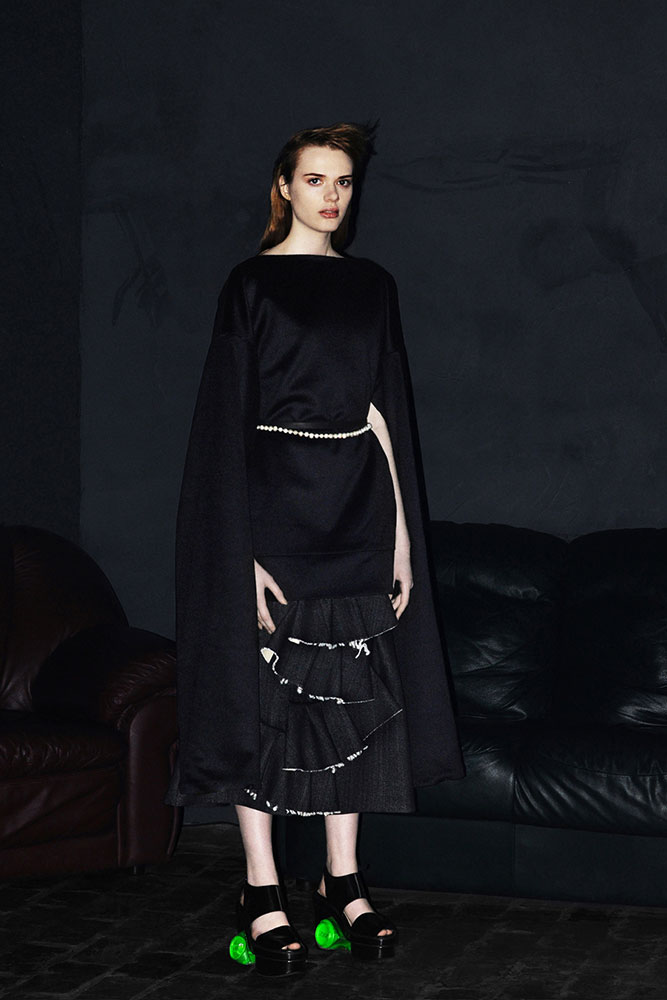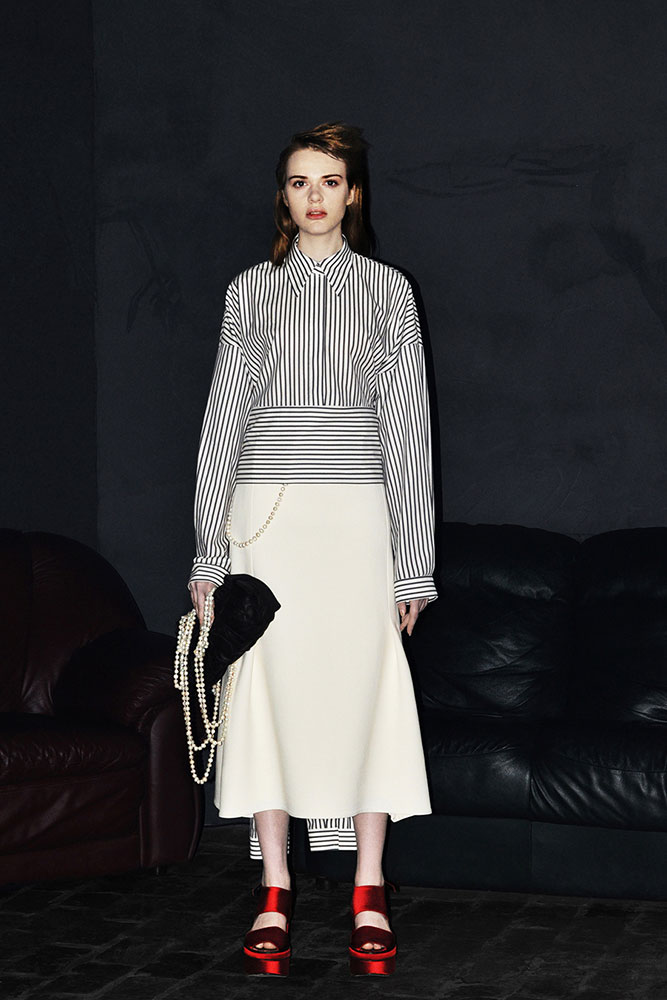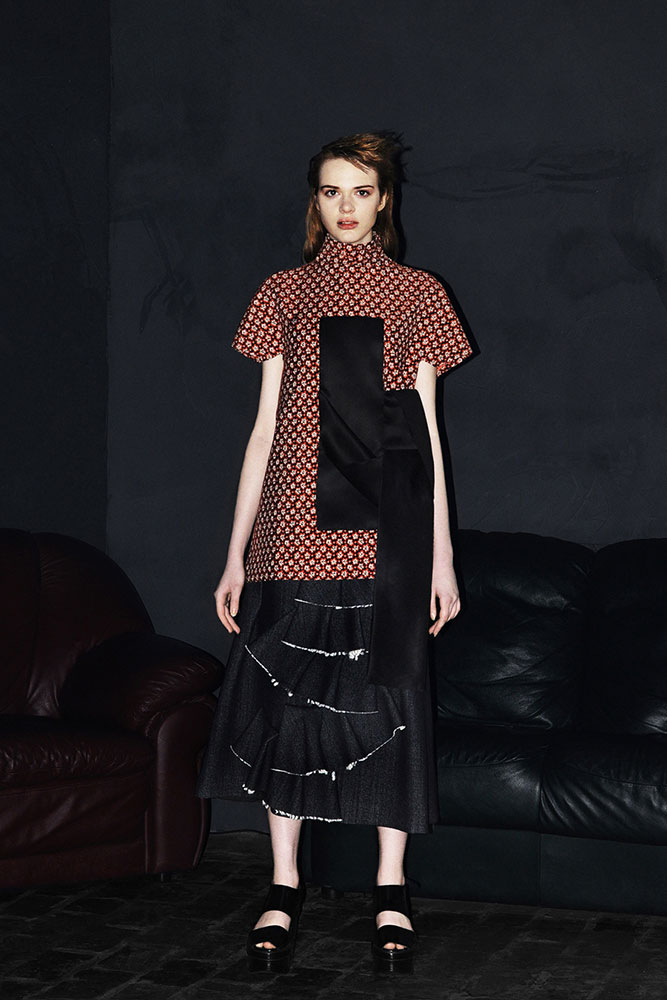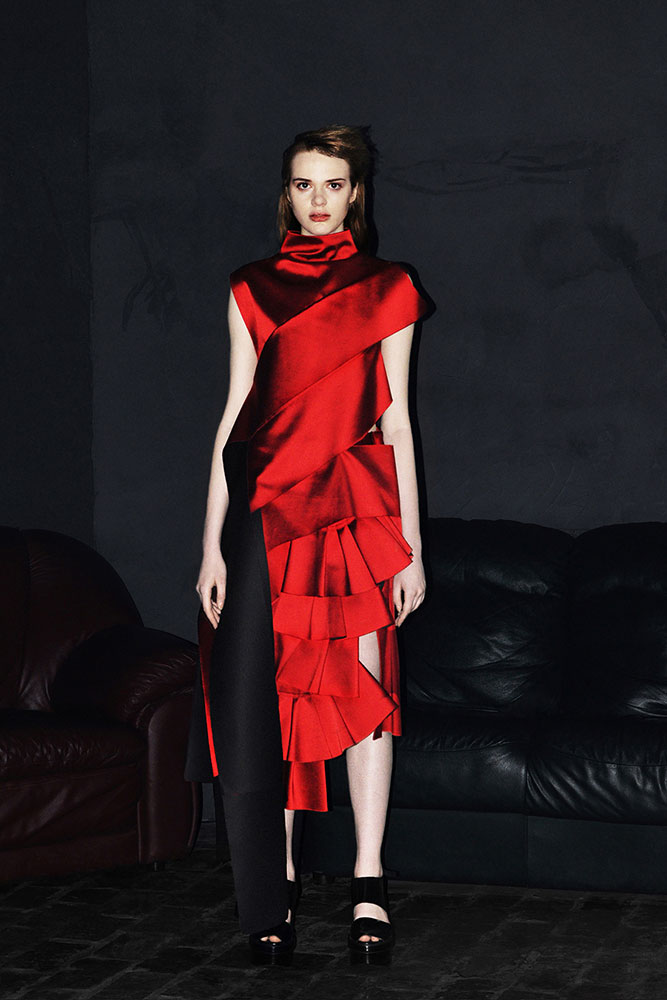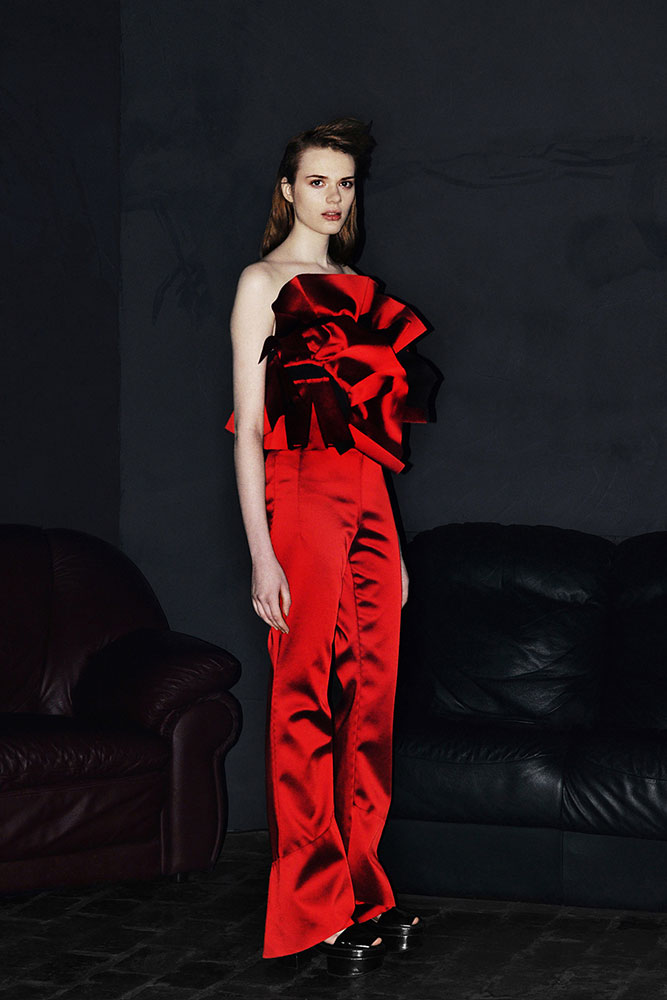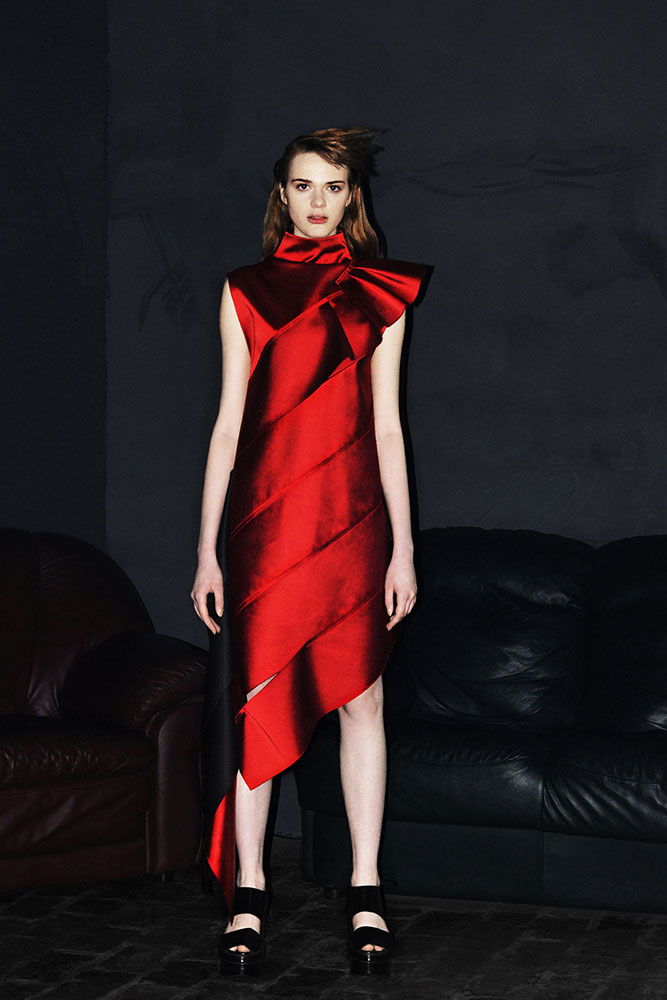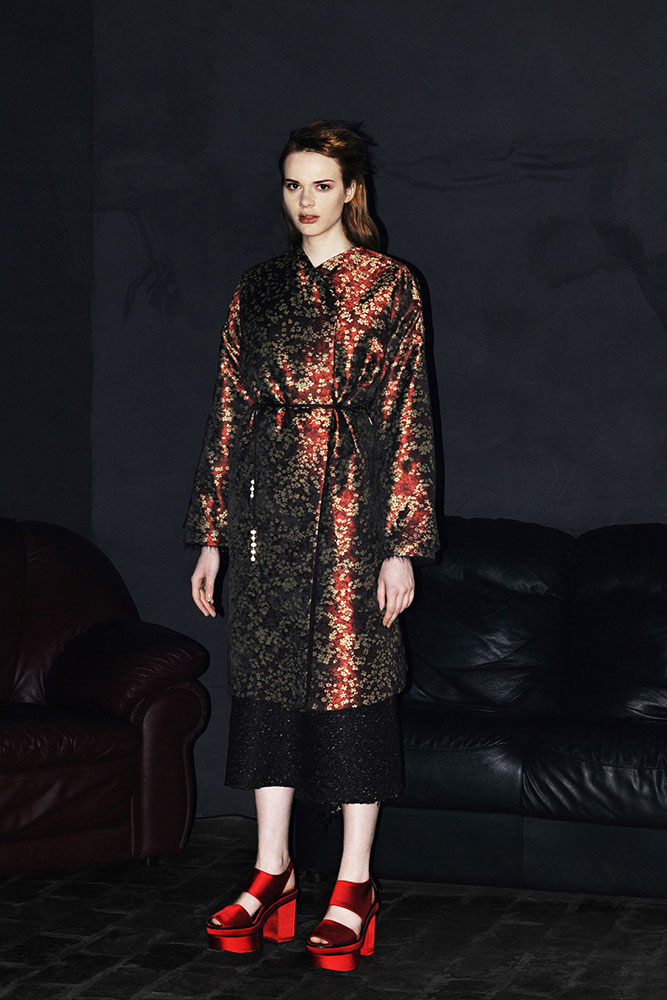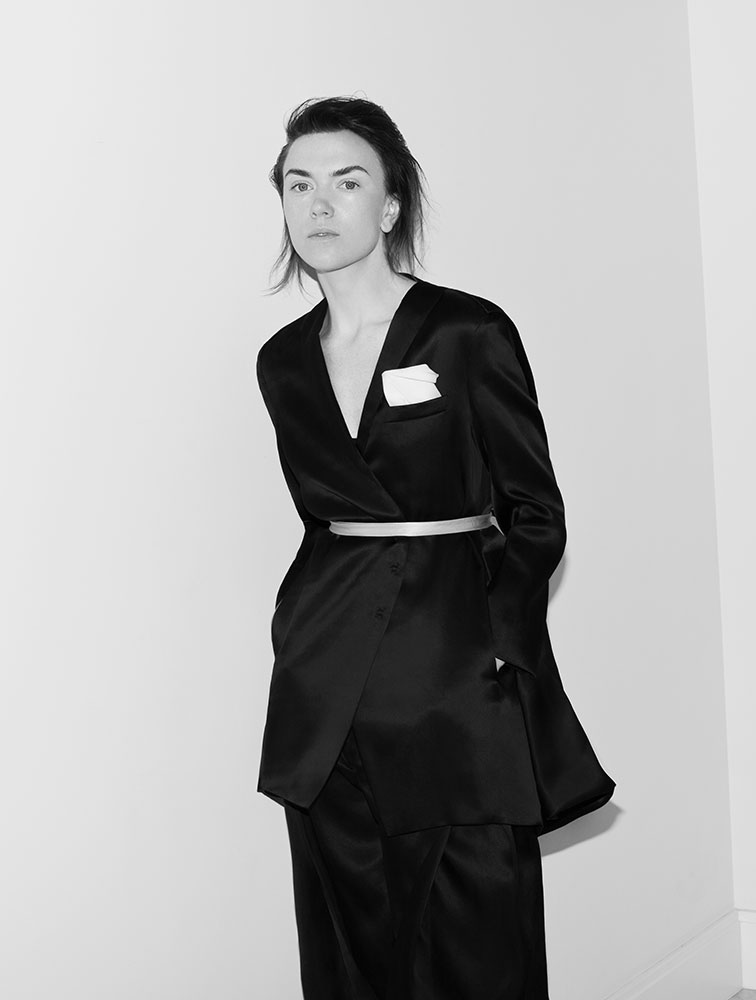Disorientation: going east and west with Lilia Litkovskaya’s new collection
Ukrainian fashion designer Lilia Litkovskaya is the queen of bold statements and pristine details. Her latest collection, Carousel 4.20, is a culture clash of east and west where silk meets denim and geishas go raving
Collection
Lilia Litkovskaya was born in Kiev and set up her own label in 2009. The idea of duality is key to her work: whether it’s the concept of gender binary, contrasting materials and silhouettes, or, like in her most recent collection, the opposition of east and west. The initial inspiration for Carousel 4.20 was a 2014 exhibition of Japanese artist Hokusai at the Grand Palais in Paris. Her new collection explores orientalism and the process of cultural appropriation, and looks at how western audiences perceive Japanese culture. “To me the story was not about adjusting Japanese codes to the ideas of western dress or vice versa but about studying how Europeans have always looked up to the eastern tradition of clothing,” says Litkovskaya. “In the end I was thinking about a young woman who finds a Japanese costume at the theatre wardrobe and puts it on to go to a rave. It was crucial for me to speak of the legacy of eastern dress, all the more to put it in a new scenario that’s urban and quite punk. I love these kinds of juxtapositions.”
INSPIRATION
One of the collection’s key elements is the juxtaposition of shapes and textures symbolising east and west. “One side of the collection is very ornamental and obviously draws inspiration from the Japanese kimono — the tenderness of floral prints, the fluidity of draped fabrics and the looseness of shapes. And then there’s the rigidity of western sartorial codes — the workwear and pinstriped shirts, the denim and suede, the raw seams. I wanted to make two worlds collide, one that was very vulnerable and elegant, the other more brutal and kind of industrial.”
DETAIL
Litkovskaya’s use of details is not just ornamental — each small feature serves as a fragment of the main story and draws the imagery together. The previous collection had a recurring graphic appliqué of an orange arrow that recalls a traffic sign. This season, however, it’s more about colour and craft. “The biggest challenge was the injection of scarlet red,” the designer explains. “We worked with delicate floral prints and very rich textures of bouclé wools and suede leathers, so the desire to introduce a counterpoint to that was quite natural. To me red is a very aggressive colour with its own story and connotations. It took a long time to figure out the right way to add red to the collection but we found this bonded fabric in a vivid shade that worked perfectly well. I wanted to push the contrast on both sides — making it very ornamental and industrial at the same time. To balance the certain roughness of materials (denim-looking wool, leathers) we added bags and belts embellished with precious pearls. It created this nuanced nostalgic look that I love.”
SIGNATURE
Litkovskaya’s signature is bold details in a feminine aesthetic. It could be shoes: a wild 1990s variation on a geisha sandal or leather boots resembling goat’s hooves. Another one is statement coats: oversized geometric garments made of tailored hard fabric with the boldness of brutalist architecture. “I’m a huge fan of an oversize fit. I like the dramatic feel that exaggerated shapes create and how monolithic it looks. Each season we develop shapes that become the label’s signature — for example a plain coat with no lapels and a very flat, square cut. But each season I try to introduce new ideas that relate to the theme of the collection and tell a story. This season we worked on coats in patchwork wool with a graphic pattern that was inspired by authentic Japanese robes. We also made reversible kimono coats that could be worn on both sides — each has a beautiful silk lining, so when you turn it inside out it looks like a padded nightgown.”
